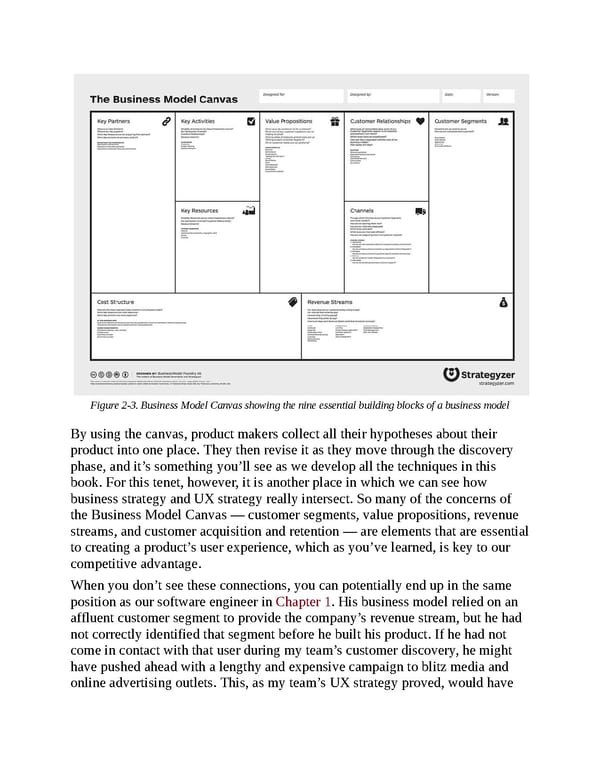Figure 2-3. Business Model Canvas showing the nine essential building blocks of a business model By using the canvas, product makers collect all their hypotheses about their product into one place. They then revise it as they move through the discovery phase, and it’s something you’ll see as we develop all the techniques in this book. For this tenet, however, it is another place in which we can see how business strategy and UX strategy really intersect. So many of the concerns of the Business Model Canvas — customer segments, value propositions, revenue streams, and customer acquisition and retention — are elements that are essential to creating a product’s user experience, which as you’ve learned, is key to our competitive advantage. When you don’t see these connections, you can potentially end up in the same position as our software engineer in Chapter 1. His business model relied on an affluent customer segment to provide the company’s revenue stream, but he had not correctly identified that segment before he built his product. If he had not come in contact with that user during my team’s customer discovery, he might have pushed ahead with a lengthy and expensive campaign to blitz media and online advertising outlets. This, as my team’s UX strategy proved, would have
 UX Strategy: How to Devise Innovative Digital Products that People Want Page 34 Page 36
UX Strategy: How to Devise Innovative Digital Products that People Want Page 34 Page 36